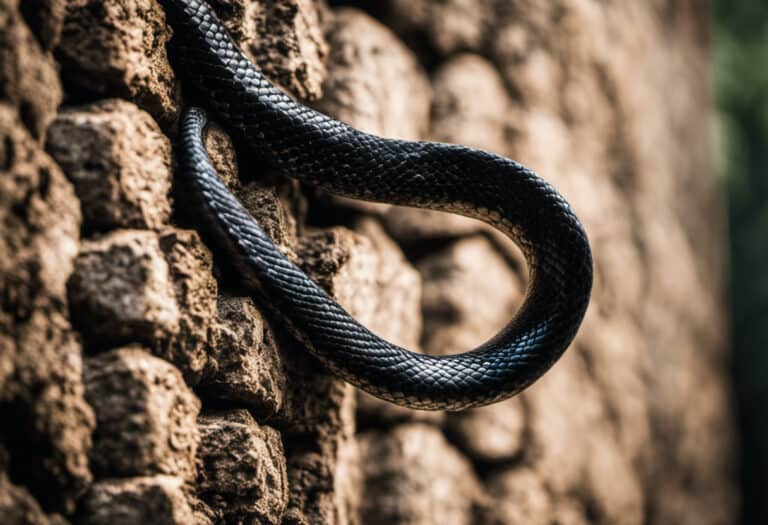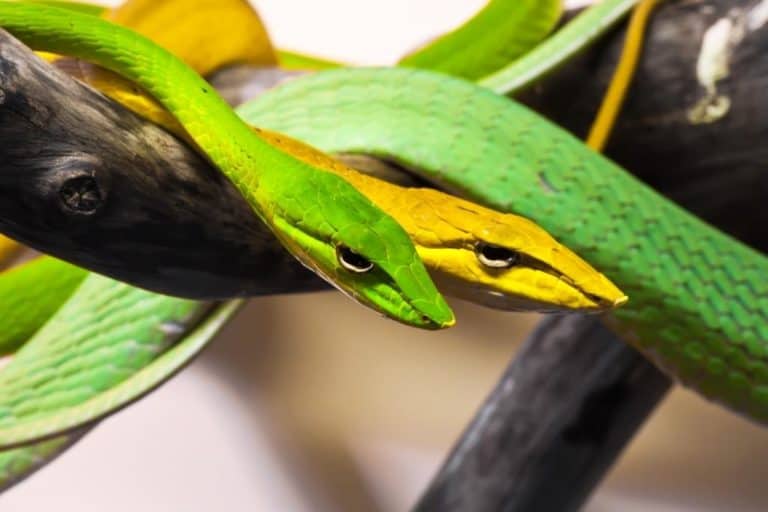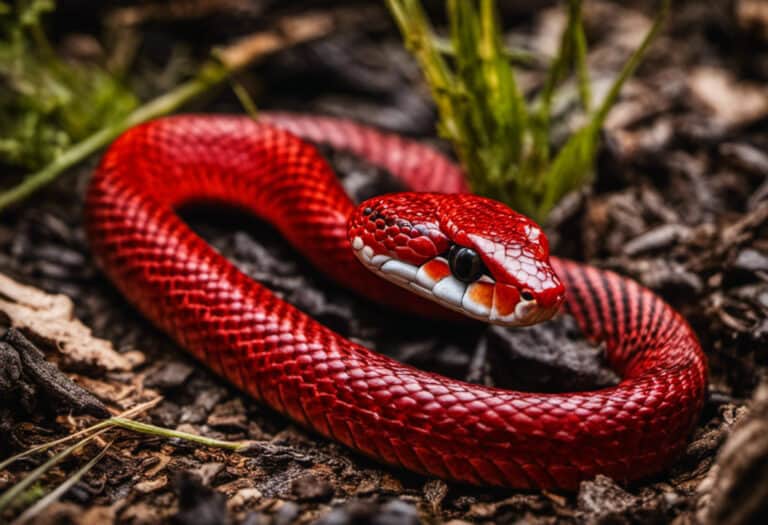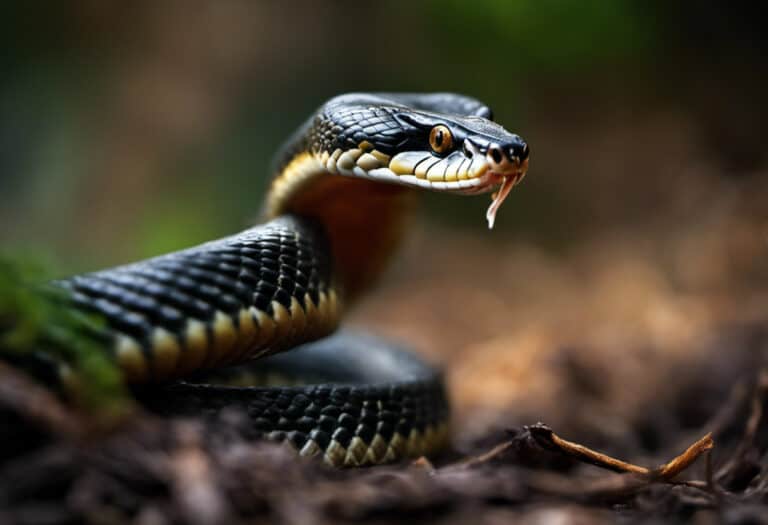How Long Does It Take a Snake to Digest?
Have you ever wondered how long it takes for a snake to digest its food? Well, buckle up and get ready for a wild ride through the fascinating world of snake digestion!
Snakes have their own unique ways of breaking down their meals, and it’s not as quick as you might think. On average, it takes these slithery creatures around 4-5 days to fully digest their prey. But hold on tight, because larger snakes can take up to a week or even longer!
So, let’s unravel the secrets of snake digestion together and discover what makes these creatures tick.
Key Takeaways
- The average digestion time for snakes is 4-5 days, with larger snakes taking up to a week or more to digest their food.
- Snakes can go several weeks without eating after digestion is complete, with larger snakes having longer fasting periods.
- Snakes have slow metabolisms and don’t need to eat a lot.
- Digestion time can vary depending on factors like temperature and food availability.
Factors Affecting Digestion Time in Snakes
Digestion time in snakes can vary depending on factors like temperature and food availability. The importance of temperature in snake digestion can’t be understated.
Snakes are ectothermic creatures, meaning their body temperature is regulated by their environment.
When the temperature is higher, the snake’s metabolic rate increases, leading to faster digestion. This is because higher temperatures enhance the effectiveness of digestive enzymes and gut bacteria.
On the other hand, lower temperatures can slow down digestion. Additionally, food availability plays a significant role in digestion time.
If snakes have access to abundant prey, they can digest their food more quickly. However, if food is scarce, digestion may take longer as the snake conserves energy.
These factors, temperature and food availability, are essential for understanding the variability in snake digestion time.
Digestion Process in Snakes
You can observe the entire feeding process of a snake, from striking and swallowing to excreting feces.
Factors such as temperature play a significant role in snake digestion. Snakes are ectothermic, meaning their body temperature is influenced by their environment. The impact of temperature on snake digestion is profound.
In warmer temperatures, the effectiveness of digestive enzymes and gut bacteria increases, leading to faster digestion. On the other hand, colder temperatures slow down digestion. This is because the snake’s metabolic rate decreases in colder environments, resulting in a slower breakdown of prey.
Additionally, food availability also affects digestion time. When prey is scarce, snakes may take longer to digest their food as they conserve energy.
Overall, various factors, including temperature and food availability, influence the digestion process in snakes.
Snake Fasting Period and Metabolism
During the fasting period, snakes can go for several weeks without eating due to their slow metabolism. Snakes have evolved efficient systems to conserve energy and survive long periods without food.
Their metabolic rate, which is the rate at which they convert food into energy, is much lower compared to warm-blooded animals.
This allows them to stretch their resources and endure extended periods of fasting. The slow metabolic rate also means that snakes don’t need to eat as frequently as other animals.
They’ve adapted to efficiently utilize the nutrients from their prey, allowing them to sustain themselves for longer periods.
This fasting efficiency is crucial for snakes, as it enables them to survive in environments where food availability may be scarce.
By conserving energy and having a slow metabolic rate, snakes have the freedom to go without food for prolonged periods, ensuring their survival in challenging circumstances.
Adaptations for Efficient Digestion in Snakes
Snakes have evolved adaptations for more efficient digestion. One of these adaptations is refuge-seeking after swallowing their prey whole.
By finding a safe and undisturbed environment, snakes can prevent regurgitation and allow for the breakdown of the prey through stomach acid and enzymes. Another adaptation is the ability to digest bones.
Snakes have strong stomach acid, enzymes, and energy that allow them to extract necessary nutrients from bones.
By digesting bones instead of regurgitating them, snakes can maximize nutrient absorption and minimize wastage. These adaptations contribute to the overall efficiency of snake digestion, helping them thrive in their natural habitats.
Variations in Digestion Time Among Snake Species
The digestion time among different snake species can vary depending on factors like size and prey. Factors influencing digestion time in snakes include the size of the snake, the size of its prey, and individual variations.
Let’s explore the comparison of digestion time between different snake species:
- Large snakes: They typically take longer to digest their food, sometimes up to a week or more. Due to their size, they’ve larger prey to break down, which requires more time and energy.
- Small snakes: They’ve smaller prey to digest, so their digestion time is generally shorter, usually around 4-5 days.
- Specialized feeders: Certain snake species, such as egg-eating snakes, have adaptations that allow them to digest their food more quickly once the egg is cracked.
It’s important to note that these digestion times are averages and can vary depending on various factors.
Frequently Asked Questions
Do Snakes Digest Bones as Part of Their Digestion Process?
Yes, snakes digest bones as part of their digestion process. Their stomach acid and digestive enzymes break down the bones, allowing them to extract necessary nutrients. This process requires time and energy.
How Does Temperature Affect the Digestion Time in Snakes?
Temperature variations can affect a snake’s digestion time. Warmer temperatures increase metabolic rate, allowing for faster digestion. Cooler temperatures slow down digestion, giving the snake more time to extract nutrients.
What Adaptations Do Snakes Have to Ensure Safe Digestion?
Snakes have unique digestive system features to ensure safe digestion. They find refuge while digesting, as disturbances can cause regurgitation. They lack teeth for chewing, so they digest bones using strong acid and enzymes.
Can Disturbances During Digestion Cause Snakes to Regurgitate Their Food?
Yes, disturbances during digestion can cause snakes to regurgitate their food. When the digestion process is interrupted, snakes may regurgitate their prey to escape potential threats or to resume the process later.
Are There Any Factors Other Than Size That Can Affect the Digestion Time of Snakes?
Factors such as temperature, food availability, and snake species can impact digestion time. The snake’s diet, including the size and type of prey, can also influence how long it takes for digestion to occur.
Conclusion
As we conclude our exploration into the world of snake digestion, we can’t help but marvel at the intricate process these fascinating creatures undergo to break down their meals.
Like a well-orchestrated symphony, factors such as size, temperature, and prey availability all play a role in determining the digestion time for snakes.
Through their unique adaptations, snakes have mastered the art of efficient digestion, relying on stomach acid and enzymes to break down their prey.
So next time you encounter a snake, remember the intricate dance happening within its digestive system.






